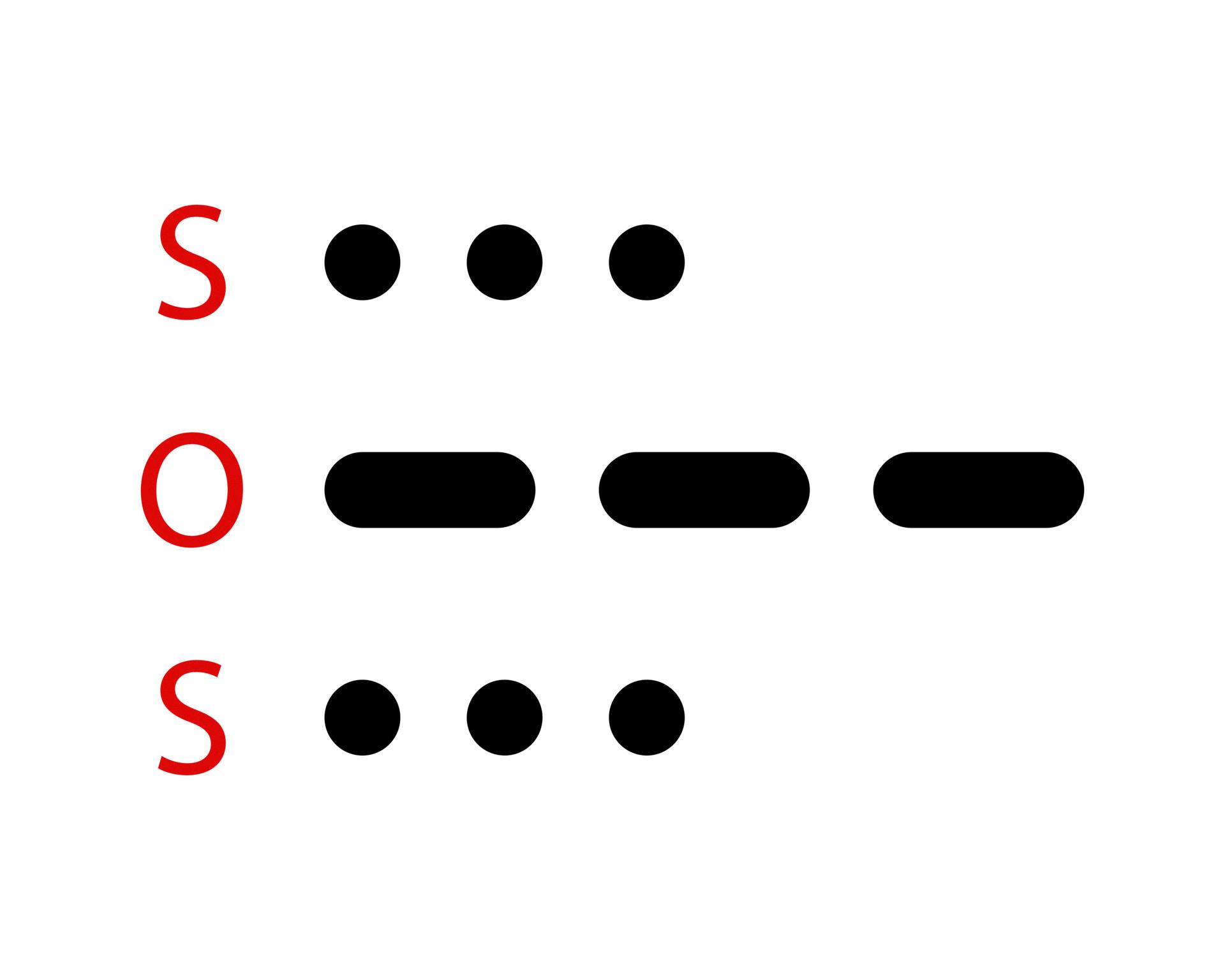SOS is a Morse code distress signal that is internationally recognized as a call for help durng an emergency. It was initially established for maritime use, but it is now widely used in various situations, such as aviation, wilderness, and disaster scenarios.
The letter sequence SOS is used in Morse code as a distress signal. It is composed of three dots, three dashes, and three dots again. The S is represented by three dots (.), and the O is represented by three dashes (-). The signal is sent as a continuous wave, with no gaps between the letters and no pause between the repetitions. It is usually transmitted repeatedly, with a pause between each repetition.
The SOS signal is easy to recognize and remember, even in high-stress situations. It is also easy to transmit using simple equipment, such as a flashlight, a whistle, or a radio. In Morse code, the signal can be sent using a variety of devices, such as a telegraph, a sounder, or a keyer.
In addition to the SOS signal, Morse code also includes a range of other signals and codes that are used in various contexts. For example, the code for the letter A is a dot followed by a dash (. -), and the code for the letter B is a dash followed by three dots (- . . .). Other codes include numbers, punctuation marks, and special characters.
Morse code has a long history, dating back to the early 19th century. It was developed by Samuel Morse and his colleagues as a way to transmit messages over long distances using telegraph wires. The code quickly became popular and was used extensively in telegraphy, radio communication, and other applications.
Today, Morse code is still used by some amateur radio operators and emergency responders, although it has largely been replaced by more modern communication technologies. Nevertheless, its simplicity and reliability continue to make it a valuable tool in certain situations, particularly when other forms of communication are unavailable or unreliable.
The SOS signal in Morse code is a simple and effective way to call for help during an emergency. It is easy to remember, easy to transmit, and widely recognized around the world. While Morse code may no longer be the primary means of communication in many contexts, its legacy lives on as a testament to the ingenuity and inventiveness of its creators.
How Do You Signal SOS?
To signal SOS, you can use Morse code, which is a system of dots and dashes to represent letters and numbers. The SOS signal in Morse code is three short dots, three long dashes, and three short dots, all run toether with no spaces. This can be transmitted using a flashlight, a whistle, or by tapping on a hard surface like a tree with a stick. Another way to signal SOS is by using a signal mirror, which reflects sunlight onto a target to create a visible signal. Alternatively, you can use your arms to form a “Y” shape and wave them around to signal an aircraft that you’re in need of assistance.

Is SOS And Morse Code The Same?
SOS and Morse code are not the same. Morse code is a system of communication that uses a combination of dots and dashes to represent letters and numbers. It was invented by Samuel Morse in the early 19th century and was widely used for telegraph communications. On the other hand, SOS (▄ ▄ ▄ ▄▄▄ ▄▄▄ ▄▄▄ ▄ ▄ ▄) is a specific sequence of Morse code that is used as a distress signal. It consists of three dots, three dashes, and three dots again, and is internationally recognized as the universal distress signal. So wile Morse code is a general system of communication, SOS is a specific sequence within that system that is used for emergency situations.
What Does SOS Mean In Code?
SOS in code refers to a distress signal used to call for help during an emergency situation. It is commonly used in Morse code, where it is represented by three dots, three dashes, and three dots. The letters SOS itself do not have any specific meaning but are used as a universally recognized call for assistance. This signal is often used by ships, aircraft, and oher vehicles to communicate that they are in distress and need immediate help. It is important to note that SOS is not an acronym and does not stand for any specific words, but rather is a code used to signal an emergency.
What Are The Dashes For SOS?
The dashes in SOS are used to represent the letter “O”. The SOS distress signal is a universal call for help in emergency situations and is represented by three short dots, followed by three long dashes, and then three more short dots. The dashes are an essential part of the signal as they help to clearly communicate the three specific letters that make up the acronym. It is important to note that the SOS signal is only to be used in emergency situations where there is an immediate threat to life or property.
Conclusion
The SOS signal in Morse code has been a crucial tool for calling for help during emergency situations, partiularly in maritime settings. The three-dot, three-dash, three-dot sequence is recognized worldwide as a distress signal, and is often used in conjunction with other emergency communication methods, such as flares and radio distress calls. It is important for individuals who may find themselves in an emergency situation to familiarize themselves with the SOS signal in Morse code and to know how to use it effectively to call for assistance. By understanding the importance of this distress signal, individuals can increase their chances of survival and ensure a timely response from emergency services.
